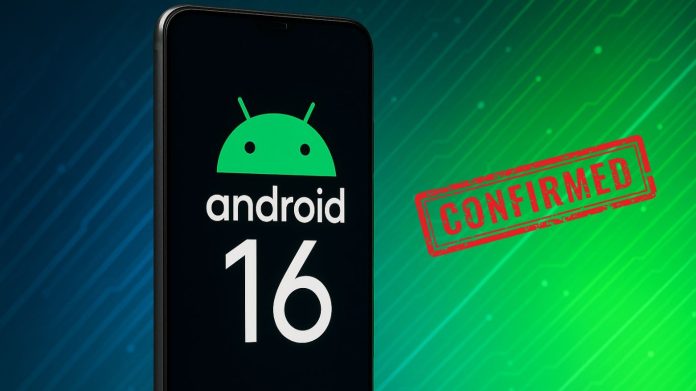Every year, Google releases a significant new version of Android, and Android 16 in 2025 is no exception.
Ahead of Google I/O 2025, Google held a special event to unveil Android 16, even though it isn’t anticipated to be available for some time.
The main speech didn’t reveal anything more, but rumors and leaks fill in a lot of the gaps, including the crucial possible release date. This is all the information you require.
When will Android 16 be released?
Android 16 was formally unveiled by Google on May 13 at their “The Android Show: I/O Edition” event. You can watch it again in its entirety if you missed it.
The new operating system’s official release date has not been announced by the corporation. Nonetheless, in a press event, Allen Huang, Google’s Director of Product Management for Pixel and Android system UI, virtually assured everyone that the public release will occur in June.
This is consistent with a previous official plan that said the “major release” may occur in Q2, or before the end of June 2025.

Although Google has not provided a specific date, Android 16 may be released on June 3, 2025, and Pixel devices will be able to receive the upgrade via an over-the-air rollout that same day.
The Pixel 10 series will then probably be the first phones to come pre-installed with Android 16. The rollout to all suitable Android phones, however, is likely to take many months, as is customary.
As a reminder, here are the release dates of previous versions of the system:
- Android 15 – September 2024
- Android 14 – October 2023
- Android 13 – August 2022
- Android 12 – October 2021
- Android 11 – September 2020
- Android 10 – September 2019
Sources:Google | Android Authority | Android Headlines
In summary
- All Android 15 phones that are still supported by updates should get Android 16
- Timeline for rollout depends on specific manufacturers and age of device
The Android 16 upgrade will be available for a variety of Android phones (and other devices like tablets) from various manufacturers, as is the case with other significant Android updates.
Expect the Pixel 6 series, Pixel 7 series, Pixel 8 series, Pixel 9 series, and future Pixel devices, including the Pixel 10 series, to receive the update as soon as possible because Google’s own Pixel phones are always among the first to receive new Android versions.
Furthermore, Android 16 is anticipated to be installed on a large number of Android flagship phones, both present and future, from manufacturers including Xiaomi, Motorola, OnePlus, Samsung, and others.
![]()
However, it’s crucial to remember that manufacturers usually release upgrades according to regional strategy and device tiers. Updates are typically released first for high-end smartphones, then for mid-range and low-cost models.
What new features will we see in Android 16?
In summary
- New ‘Material 3 Expressive’ user interface revealed
- Even more extensive customisation options
- Key system apps get redesigned
Confirmed features
Google has confirmed that all of the following features will be available in Android 16.
New ‘Material 3 Expressive’ design
The largest redesign of the Android design in years is Material 3 Expressive. Making your Android tablet or phone feel “more fluid, personal, and glanceable” is its goal.
One of the main improvements is what Google refers to as “more natural, springy animations,” which make the gadgets “feel more human” as opposed to being lifeless technological instruments. In addition to employing haptic feedback to provide a modest, realistic vibration, this is accomplished visually.
For instance, your phone will react when you drag your finger to dismiss a notice. Other items and notifications will react as though the vibration is affecting them. You can still see the app that is shown below because the notification shade is a little blurry.
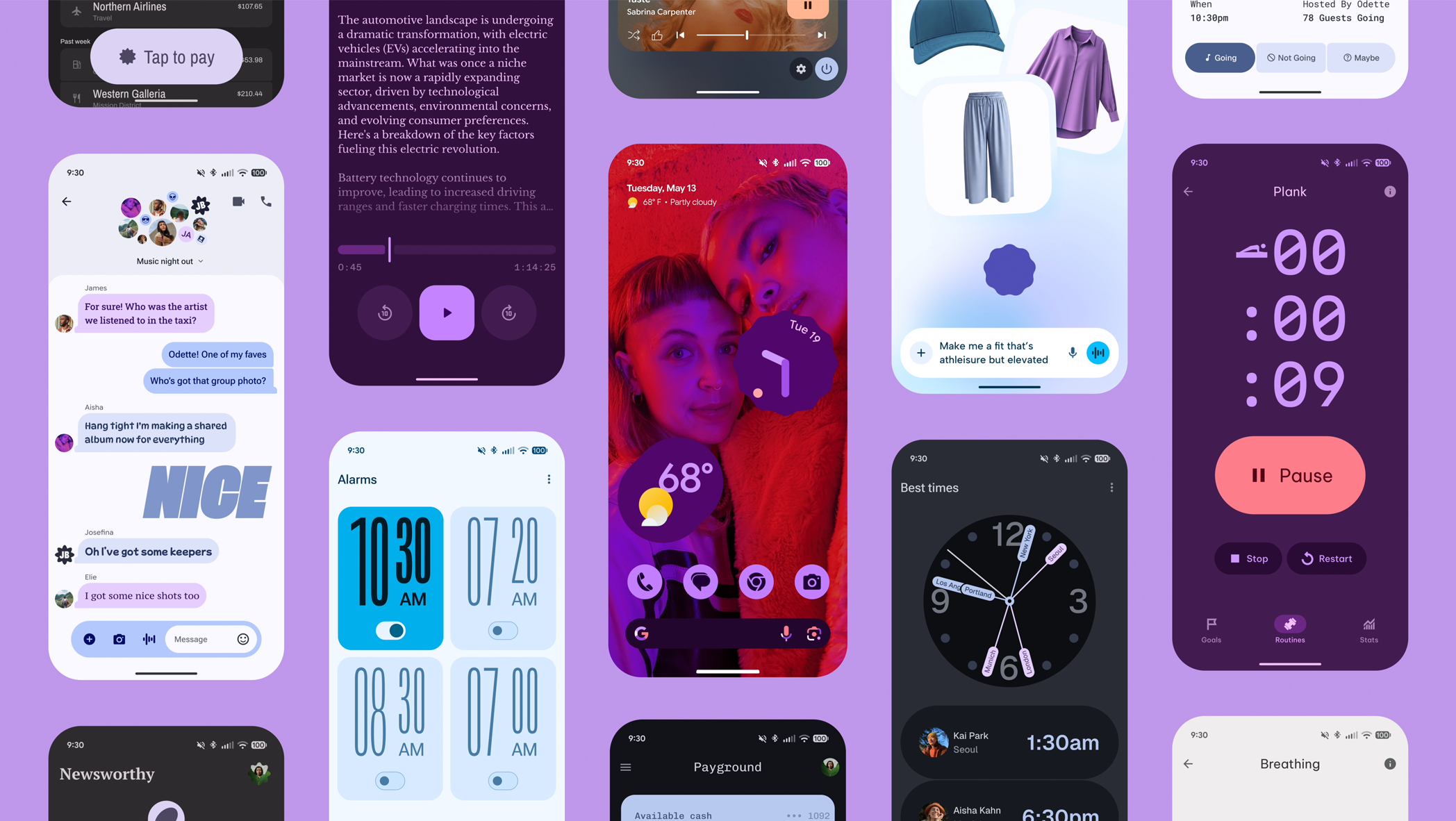
As you can see above, further customization possibilities are made possible by a new selection of themes, typefaces, and other “responsive components.”
Redesigned system apps
As seen below, several of Google’s most well-known apps are also undergoing updates, including Health Connect, Gmail, and Google Photos.
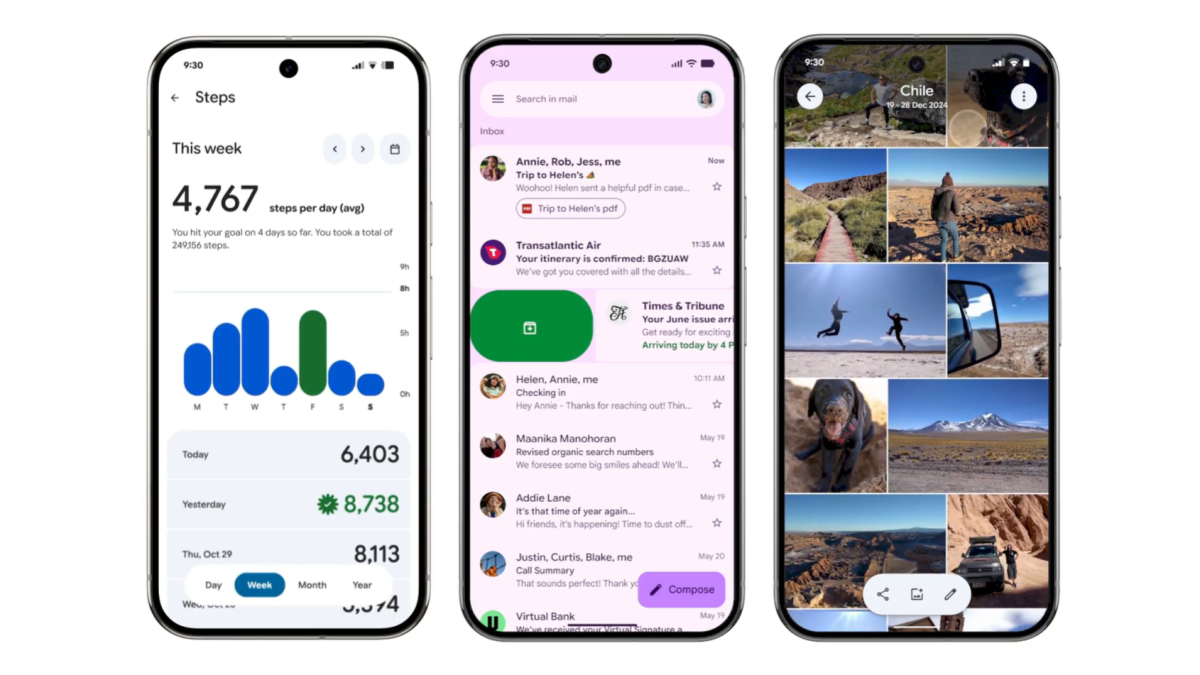
New Quick Settings menu
New paint is being applied to more than just apps. Another change is the appearance and feel of the Quick Settings panel, which can be accessed by swiping down from the top of the screen.
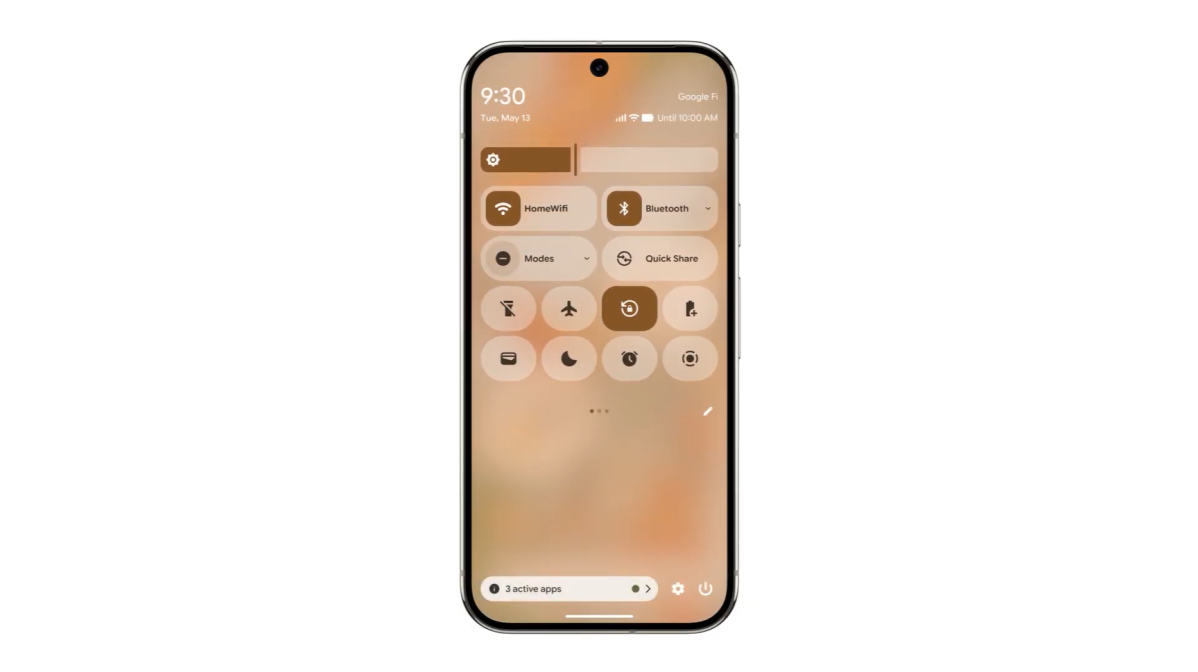
Google claims that in addition to the aesthetics, users will be able to “squeeze in more of your favorite [sic] actions.” That means you will be able to tap to get more of the quick settings you frequently use.
A revamp of the entire control panel and the volume slider is also planned.
Live Updates
Additionally, Google is updating Android 16 with its own rendition of Apple’s “Live Activities.”
This feature, called “Live Updates,” incorporates an update into the notification shade so you can observe what’s happening without being sidetracked by other alerts.
We are aware that Uber Eats is one of the “top delivery, rideshare, and navigation apps” that are supported.
Desktop Mode
Additionally, Android 16 will have desktop mode, which will let you use your phone as a desktop by connecting it to an external display.
Does that sound familiar? At first glance, it looks a lot like the Samsung DeX, which debuted in 2017 and went wireless three years later.
In fact, Google acknowledged during its I/O keynote that it has been collaborating with Samsung on the feature and that Desktop Mode is “built on the foundations of Samsung DeX.”
Sources: SamMobile
Rumoured features
While these features have all been rumoured or leaked, Google is yet to confirm if they’ll be included in Android 16.
Share audio
“Audio sharing” is a feature in Settings in Android 16’s QPR1 Beta 1, which is now the most recent version.
As the name implies, if someone has the username and password, they can listen to the same content as you. You will need headphones that support Bluetooth LE audio, though, in order for it to function.
Sources: 9to5Google
Smaller (but not removable) At a Glance widget
The “At a Glance” widget, which shows the date, your calendar (including upcoming activities), and the weather, has been one of the biggest annoyances with Pixel phones.
However, until you download a different launcher, you are unable to remove it off the home screen. That won’t change based on a beta, but you can make it smaller than it was.
Redesigned lock screen
A beta indicates that changes are also being made to the default lock screen. The date and time are to the right of the At a Glance widget, which has moved from its customary location at the top of the screen to beneath the main clock.
You may probably still customize this to your preference.
Redesigned notifications panel
Based on the beta, the notifications tray on Android 16 is also getting a makeover.
This features shortcut buttons that show up right below a list of incoming notifications and allow you to “Clear all” as well as access notification history and settings. When there are no notifications, they seem to vanish.
Your most recent notification is displayed in its entirety by default, while all previous notifications are only shown as an icon. This is “Compact view,” but you may see each one in detail using the new “Full list” choice.
To manage all of this, a new page called “Notifications on lock screen” has been created.
Stackable widgets
Similar to Samsung’s One UI and iPhone organization, Google is thinking of introducing stackable widgets to Android, which would let users combine several widgets and swipe among them. This function would enhance organization and conserve home screen space.
For the Android Open-Source Project (AOSP), Google has indicated that it is investigating stackable widgets, which would facilitate manufacturers’ adoption. Its release date is unknown, though, and it’s uncertain if development has started.
While not confirmed, the feature would be a welcome addition for better home screen management.
Lock screen widgets
Additionally, Google has revealed plans to add additional Android tablets and phones to its lock screen widgets. At the moment, only the Pixel Tablet has this capability.
After being eliminated in previous Android versions, lock screen widgets will make a comeback with Android 16. Soon after the official release of Android 16, which is anticipated in June, Google has announced that developers will be able to enable these widgets.
Android Authority was able to enable the function and found an intriguing detail, despite the fact that it is not currently operational on Android 16 beta handsets.
![]()
Widgets are accessible on the Pixel Tablet by swiping right on the lock screen. Widgets, however, are connected to Android’s screensaver mode on smartphones, which only turns on while the device is docked or charging.
Thankfully, Google will let developers choose how to activate the widget interface, so phone manufacturers may use alternative strategies.
Sources:Google | Android Authority
Notification summary feature
According to a source, Google is testing a new feature in Android 16 called “notification summaries,” which is intended to automatically summarize discussion notifications from messaging apps. The ability to remove particular apps from summarization can be found in Settings > Notifications, and it was first discovered in Beta 3.
Google’s method is more constrained than Apple’s, summarizing only conversation notifications that have been specifically specified by apps. Because alerts are brief and frequently unclear, the feature’s accuracy may be limited by its reliance on on-device AI utilizing Google’s Gemini Nano model.
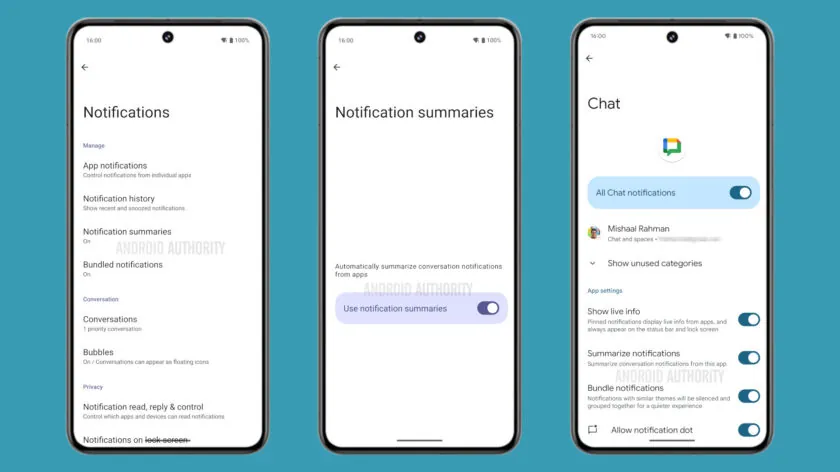
Although it is in Beta 3, it is not yet functioning, indicating that it might not be available with the stable release of Android 16 but rather in a later update or Android 17.
Customisable icon shapes
Google is returning icon shape customization to the Pixel Launcher, which was last available in Android 11, according to Android Authority. An “app shape & layout” menu has now been found in Android 16 Beta 3, giving users the option to select from six distinct icon forms.
Icons in the recents screen and Settings app are unaffected by the feature, but it does apply a mask to the home screen, app drawer, and folder icons. Circles, squares, and more intricate geometric patterns are among the shapes that are offered.
Redesigned Settings app
Google is also apparently testing a redesigned Settings app in Android 16 Beta 3, aimed at improving navigation and visual clarity.
The new “expressive” design introduces Material You switches with X or checkmark icons, settings entries placed in distinct cards, arrow icons indicating subpages, and a repositioned header to display more items at a glance.
Other minor tweaks include a bubble for the back arrow and larger dropdown pills, but the main Settings homepage remains unchanged.
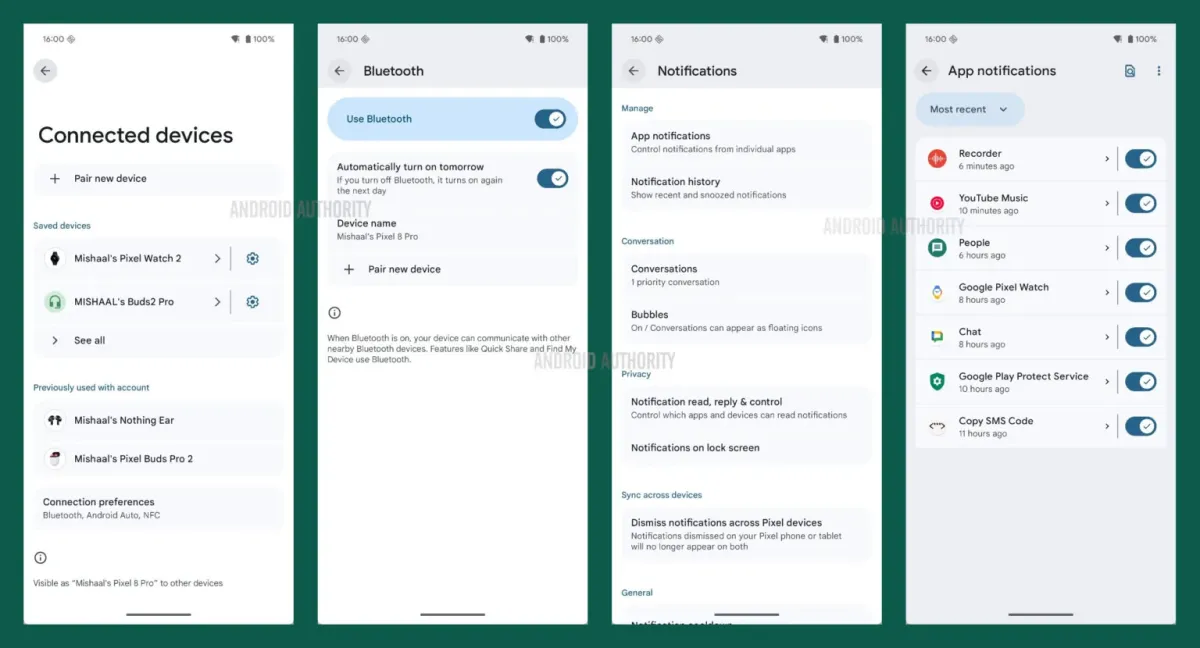
Even though this design is in the most recent beta, it might not be available with the stable release of Android 16 and instead appear in a later version or Android 17.
Refreshed status bar
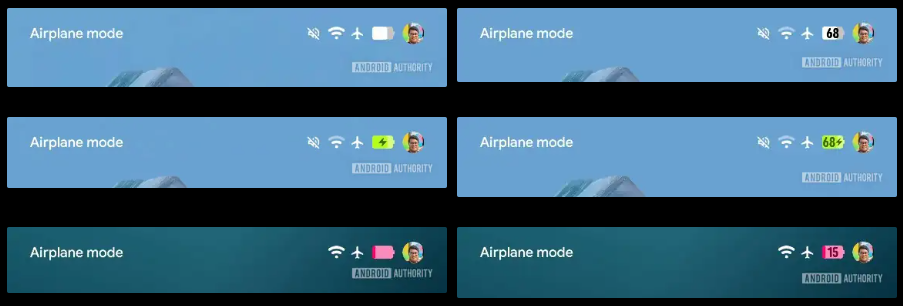
Similar to the revamped Settings app, Android 16 Beta 3 does not yet have these new icons activated by default, and it is unclear if they will be included in the final version. Instead, they might show up in a later version of Android 16 or perhaps in Android 17, possibly accompanied with a revamped Quick Settings panel and notifications.
New features for three-button navigation
According to Android Authority, those who use three-button navigation will be able to preview their next screen by holding down the back button in the next Android 16 upgrade.
Even while this feature is still in its early stages of development, it already functions with apps like Google Calendar, albeit some features—like the preview for going back to the home screen—aren’t fully functioning yet. As early as its initial beta, three-button navigation may get predictive back support.
In addition to predictive back, Android 16 may add a corner swipe motion that, when used three-button navigation, calls up the default assistant.
Additional enhancements, such the option to change the back and recent buttons’ order, are also desired by users. For customers who rely on or prefer three-button navigation, these modifications are intended to improve the experience.
Screen-off Fingerprint Unlock
Another Android Authority story claims that Google included the ability to utilize fingerprint unlock even while the screen is off in the second development preview (DP2) of Android 16.
Conventionally, in order to unlock an under-display fingerprint scanner, the screen must be woken. However, the “Screen-off Fingerprint Unlock” feature in Android 16 DP2 fixes this annoyance.
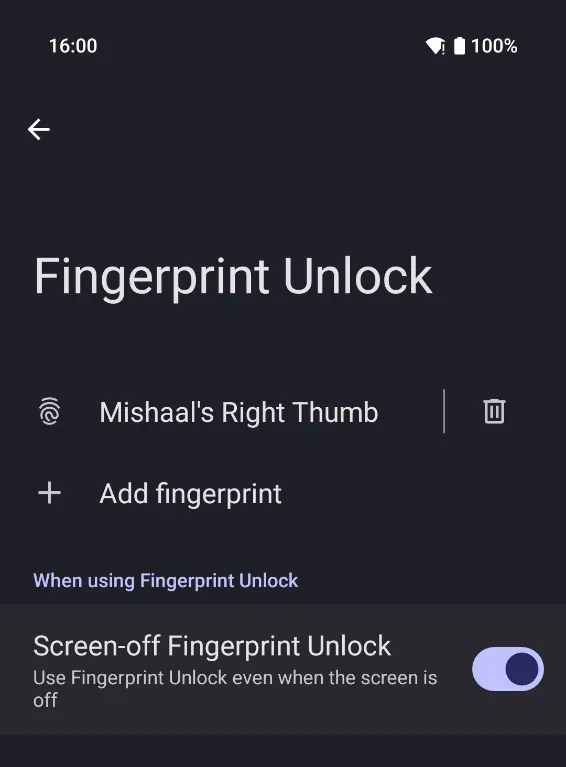
The Google Pixel 9 Pro has been shown to work well with this functionality, which can be accessed through the “Security & Privacy” settings.
There are other ways to guarantee that the fingerprint scanner is always operational if users are reluctant to install Android 16 DP2. These can be found in the display and lock screen settings and include turning on the “Always show time and info” option, the “Lift to check phone” setting, or the “Tap to check phone” function.
Advanced Protection Mode
It is anticipated that Android 16’s new Advanced Protection Mode would improve its security measures.
It may be possible to extend this mode, which was first made available for Google accounts, to provide app-level security customization. Apps will be able to determine whether this mode is active and implement extra security features, including screen locks or additional authentication procedures.
Press the power button twice to open the wallet
Double-pressing the power button, which was previously only used to activate the camera, now gives users access to their wallet in Android 16 Beta 2, according to Android Authority.
This function expedites the process, although users still need to confirm their identity before completing transactions. Users can opt to launch their wallet or the camera by adjusting the setting under “Gestures” in the phone’s settings.
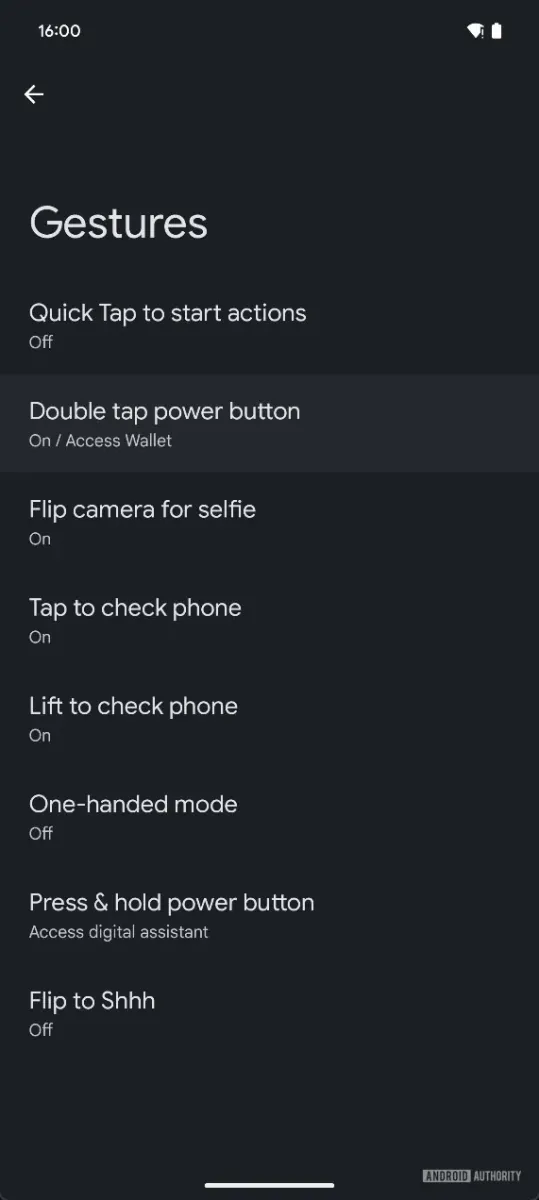
Furthermore, this feature isn’t exclusive to Google Wallet; customers can choose other wallet programs if they’d like.
A new way to trigger the screensaver
Another finding raises the possibility that Android 16 will include a new method of turning on the screen saver without docking the device.
There are currently just two situations in which Android permits the screen saver to be activated: when charging or while docked and charging. Users must choose the first option in order to activate the screen saver because many charging stands are not recognized by Android as docks.
This can be annoying for people who only want the screen saver when their gadget is on a stand, though, because it also implies that it will work with any kind of charger.
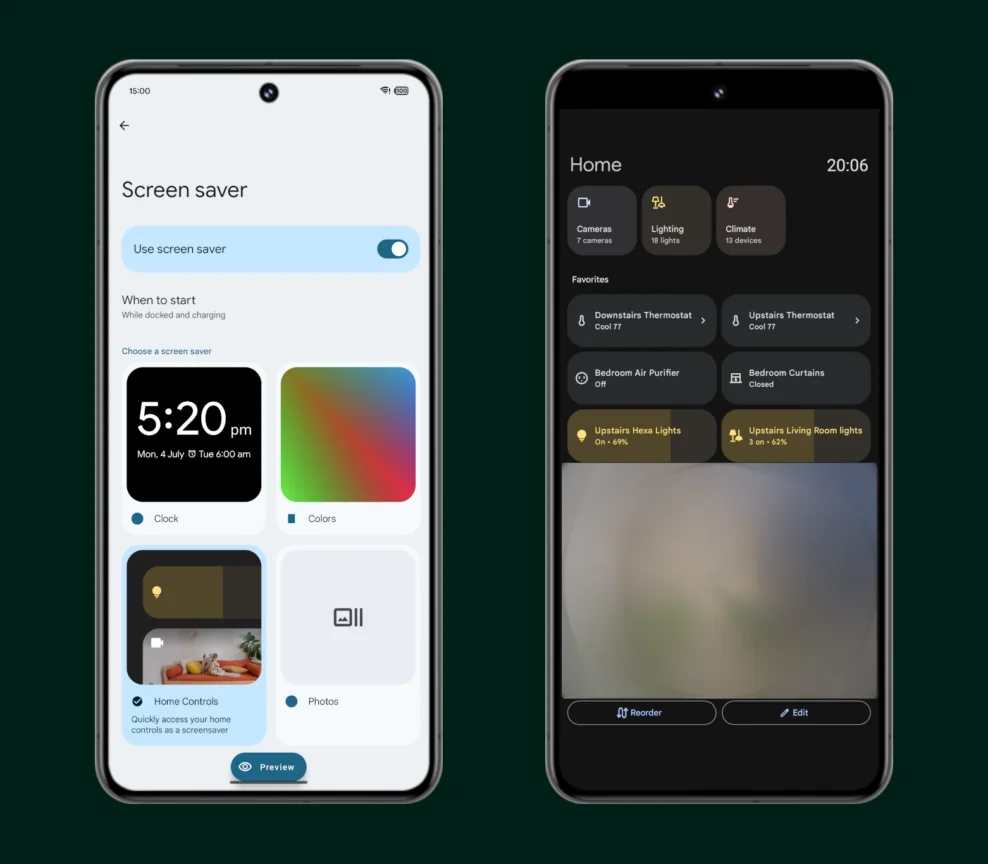
A “postured” trigger for screen savers, which would only activate when the device is upright on a stand while charging—rather than with any charger—could be a crucial improvement, according to a report from Android Authority.
Although this code was discovered in Beta 2, the feature is not yet operational, and its availability is still uncertain.


